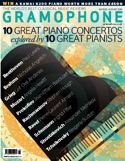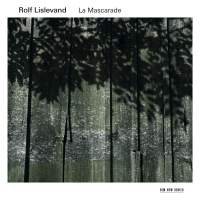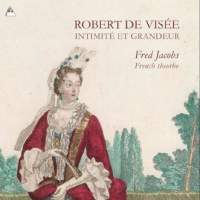Texte paru dans: / Appeared in:
|
|||||||
|
Outil de traduction (Très approximatif) |
|||||||
|
Reviewer:
William Yeoman
Baroque guitarists Francesco Corbetta and his pupil Robert de Visée were masters of chiaroscuro, of nuance, suggestion and – unintentionally – irony, exploiting the resources of their delicate instruments in intimate spaces to express the full grandeur of the monarchs they served. Yet their lives couldn’t have been more different. Corbetta (c1615-81), that great innovator and populariser of the five-course guitar, was born in Italy and worked there as well as in Spain, the Low Countries, England and finally France. The career of Frenchborn multi-instrumentalist de Visée, 30 years Corbetta’s junior, was wholly centred on the French court.
Their music makes extensive use of the typical French dance suite (which, incidentally, Corbetta helped ‘codify’). But where Corbetta’s work relies on a profusion of ornamentation, contrasting effects and the so-called ‘mixed style’ of strumming and plucking, de Visée’s – at least for the theorbo – tends towards the melodic simplicity and grandiose utterance of Lully.
That’s not to say one is superficial, the other serious; both exhibit charm and profundity in equal measure. But it takes a performer of the calibre of Baroque guitarist and theorbo player Rolf Lislevand fully to realise the synecdochal power of their music for modern ears.
On ‘La Mascarade’, Lislevand
provocatively contrasts the music of Corbetta and de Visée not just by focusing
on guitar pieces by the former and theorbo pieces by the latter but by eschewing
the suite proper in favour of (mostly) pairs of preludes or similar and
chaconnes or similar. The effect is hypnotic, dazzling and even dizzying as
Lislevand conjures up lost châteaux, parterres and the intrigues that took place
therein through the merest flick of the right-hand wrist or finely judged fall
of a left-hand finger. The resultant theatre of sound, resonant with percussive
strumming, gales of trills, overlapping campanella scales and mournful ports de
voix finds yet another analogue in the differences between the lightly built
Baroque guitar and the large, long-necked theorbo. With ‘Intimité et grandeur’,
lutenist Fred Jacobs reaches the last in his superb threevolume survey of de
Visée’s works for theorbo. Interestingly, here he manages to combine many of the
tonal qualities that characterise Lislevand’s recording by using a French
theorbo of relatively light construction. However, with an emphasis on the dance
suite (Allemande, Courante, Sarabande, Gigue, etc) and transcriptions by de
Visée of pieces by Lully, this is a very different listening experience. The
result, however, is the same: fresh insights and striking revelations from music
too often considered inconsequential when held up against that of later times.
|
|||||||
|
Consultez d'autres mois / Browse other months
|
|||||||
|
|
|
||||||
|
Cliquez l'un ou l'autre
bouton pour découvrir bien d'autres critiques de CD |
|||||||





